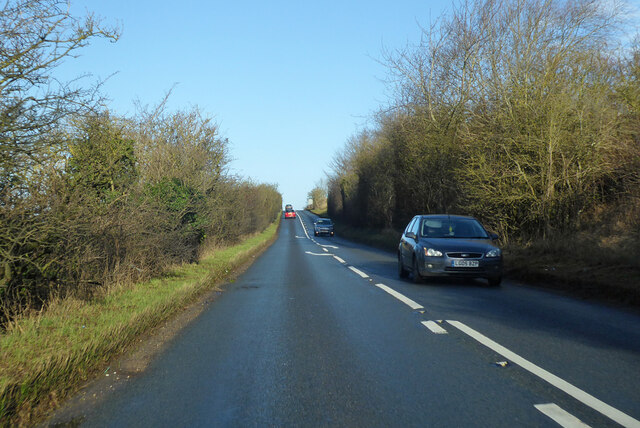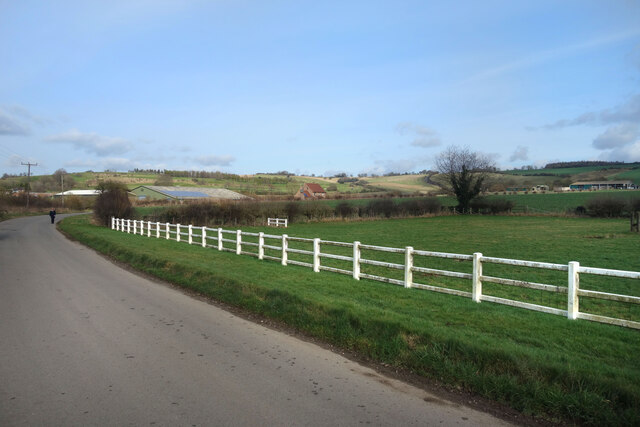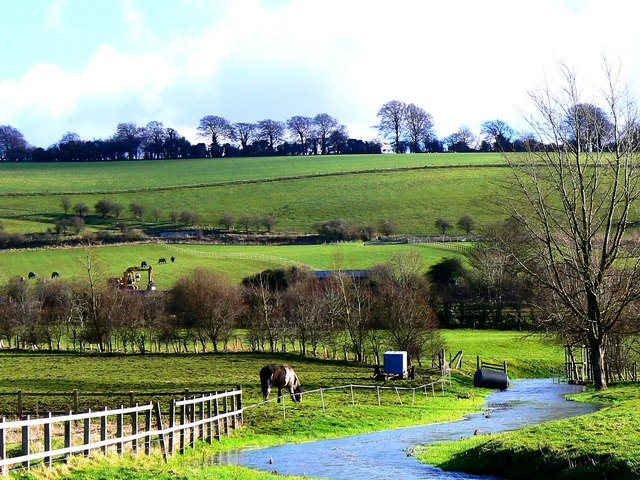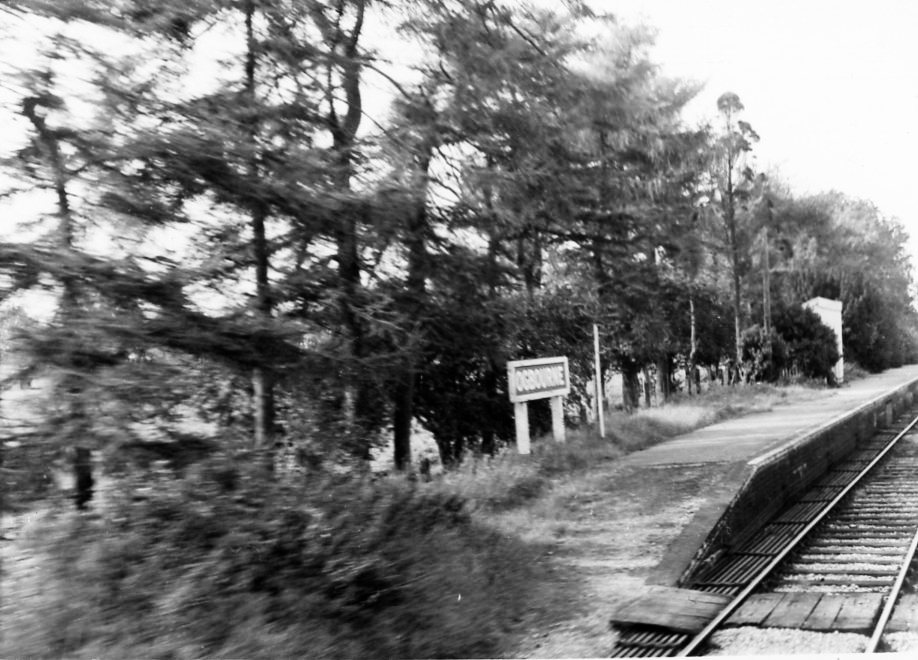Coombe Down
Downs, Moorland in Wiltshire
England
Coombe Down
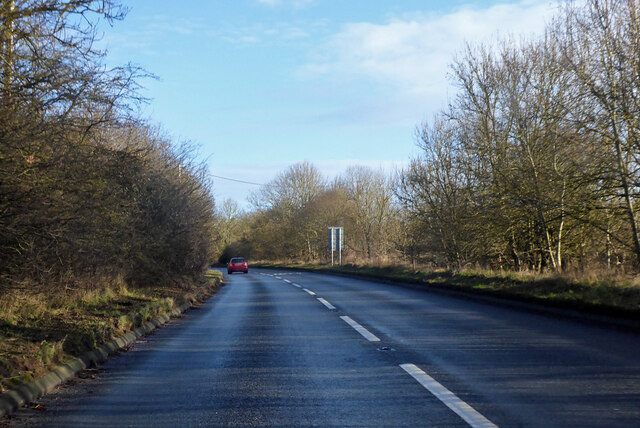
Coombe Down is a picturesque village located in Wiltshire, England. Situated on the southern edge of the Cotswolds, it is known for its stunning downs and moorland landscape. The village is set amidst rolling hills and offers breathtaking views of the surrounding countryside.
Coombe Down is characterized by its charming stone buildings, which give it a timeless and traditional feel. The village is small, with a population of around 500 residents, creating a close-knit and friendly community atmosphere. The locals take great pride in maintaining the village's historic character and preserving its natural beauty.
The downs and moorland surrounding Coombe Down provide ample opportunities for outdoor activities and exploration. The area is a haven for hikers, cyclists, and nature enthusiasts, with numerous trails and paths crisscrossing the landscape. Visitors can enjoy leisurely walks, taking in the stunning vistas and spotting an array of wildlife.
The village itself has a few amenities, including a village hall and a local pub, where residents and visitors can socialize and relax. For more extensive amenities, the nearby town of Salisbury is just a short drive away, offering a wider range of shops, restaurants, and entertainment options.
Coombe Down's proximity to the Cotswolds and its natural beauty make it an attractive destination for those seeking a peaceful and idyllic retreat. Its quaint charm, coupled with the surrounding scenic countryside, makes it a must-visit location for anyone looking to experience the quintessential English village life.
If you have any feedback on the listing, please let us know in the comments section below.
Coombe Down Images
Images are sourced within 2km of 51.463859/-1.7333887 or Grid Reference SU1873. Thanks to Geograph Open Source API. All images are credited.
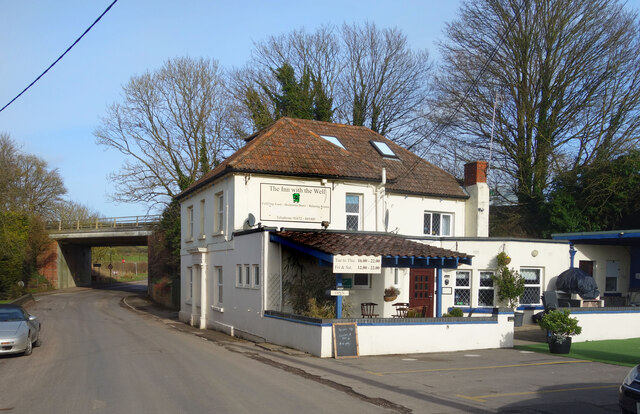
![Ogbourne St George houses [11] Park Cottage, High Street, was built in the early 19th century. Constructed of stone under a thatch roof.
Ogbourne St George is a village in the valley of the River Og in Wiltshire. It is sited just off the Roman Road from Cirencester to Winchester, about 7 miles south of Swindon and some 3¼ miles north of Marlborough. The name derives from the Saxon 'Oceburnan' or 'Oc[c]a's stream'. There is a great deal of evidence of prehistoric, Roman and medieval activity including Neolithic flint tools, Iron Age coins, Romano-British coins and pottery and medieval pottery fragments. Ogbourne St George today is a commuter village.](https://s2.geograph.org.uk/geophotos/07/40/99/7409902_29a60c37.jpg)
![Ogbourne St George ways [3] From High Street, this footpath leads, via a network of Rights of Way, to Southend and on to Ogbourne St Andrew.
Ogbourne St George is a village in the valley of the River Og in Wiltshire. It is sited just off the Roman Road from Cirencester to Winchester, about 7 miles south of Swindon and some 3¼ miles north of Marlborough. The name derives from the Saxon 'Oceburnan' or 'Oc[c]a's stream'. There is a great deal of evidence of prehistoric, Roman and medieval activity including Neolithic flint tools, Iron Age coins, Romano-British coins and pottery and medieval pottery fragments. Ogbourne St George today is a commuter village.](https://s0.geograph.org.uk/geophotos/07/40/99/7409904_5adda0eb.jpg)
![Ogbourne St George houses [12] The Park, formerly Park House, High Street, is set gable end to the street. The rear range was built in the late 18th or early 19th century of diaper brick. The front range, seen here, in red brick with a rendered facade, is mid 19th century. There is a late 19th century wing to the right. All are under tile roofs. There is a fine Tuscan portico with flanking bay windows. There is another image of the house at <a href="https://www.geograph.org.uk/photo/7410627">SU2074 : Ogbourne St George houses [13]</a>. Listed, grade II, with details at: <span class="nowrap"><a title="https://historicengland.org.uk/listing/the-list/list-entry/1365941" rel="nofollow ugc noopener" href="https://historicengland.org.uk/listing/the-list/list-entry/1365941">Link</a><img style="margin-left:2px;" alt="External link" title="External link - shift click to open in new window" src="https://s1.geograph.org.uk/img/external.png" width="10" height="10"/></span>
Ogbourne St George is a village in the valley of the River Og in Wiltshire. It is sited just off the Roman Road from Cirencester to Winchester, about 7 miles south of Swindon and some 3¼ miles north of Marlborough. The name derives from the Saxon &#039;Oceburnan&#039; or &#039;Oc[c]a&#039;s stream&#039;. There is a great deal of evidence of prehistoric, Roman and medieval activity including Neolithic flint tools, Iron Age coins, Romano-British coins and pottery and medieval pottery fragments. Ogbourne St George today is a commuter village.](https://s2.geograph.org.uk/geophotos/07/41/06/7410626_f9ffaef2.jpg)
![Ogbourne St George houses [13] The Park, formerly Park House, High Street, is set gable end to the street. The rear range, seen here, was built in the late 18th or early 19th century of diaper brick. The front range in red brick with a rendered facade is mid 19th century. There is a late 19th century wing to the right. All are under tile roofs. There is a fine Tuscan portico with flanking bay windows. There is another image of the house at <a href="https://www.geograph.org.uk/photo/7410626">SU2074 : Ogbourne St George houses [12]</a>. Listed, grade II, with details at: <span class="nowrap"><a title="https://historicengland.org.uk/listing/the-list/list-entry/1365941" rel="nofollow ugc noopener" href="https://historicengland.org.uk/listing/the-list/list-entry/1365941">Link</a><img style="margin-left:2px;" alt="External link" title="External link - shift click to open in new window" src="https://s1.geograph.org.uk/img/external.png" width="10" height="10"/></span>
Ogbourne St George is a village in the valley of the River Og in Wiltshire. It is sited just off the Roman Road from Cirencester to Winchester, about 7 miles south of Swindon and some 3¼ miles north of Marlborough. The name derives from the Saxon &#039;Oceburnan&#039; or &#039;Oc[c]a&#039;s stream&#039;. There is a great deal of evidence of prehistoric, Roman and medieval activity including Neolithic flint tools, Iron Age coins, Romano-British coins and pottery and medieval pottery fragments. Ogbourne St George today is a commuter village.](https://s3.geograph.org.uk/geophotos/07/41/06/7410627_000e1ac3.jpg)
![Ogbourne St George features [5] There is a play area amongst the modern houses of Pooles Meadow.
Ogbourne St George is a village in the valley of the River Og in Wiltshire. It is sited just off the Roman Road from Cirencester to Winchester, about 7 miles south of Swindon and some 3¼ miles north of Marlborough. The name derives from the Saxon &#039;Oceburnan&#039; or &#039;Oc[c]a&#039;s stream&#039;. There is a great deal of evidence of prehistoric, Roman and medieval activity including Neolithic flint tools, Iron Age coins, Romano-British coins and pottery and medieval pottery fragments. Ogbourne St George today is a commuter village.](https://s0.geograph.org.uk/geophotos/07/41/06/7410628_816a3dbf.jpg)
![Ogbourne St George buildings [2] The Parklands Hotel is seen here in the process of conversion to 3 separate dwellings. Built circa 1750 of rendered brick under a slate roof. Originally a public house, later a hotel.
Ogbourne St George is a village in the valley of the River Og in Wiltshire. It is sited just off the Roman Road from Cirencester to Winchester, about 7 miles south of Swindon and some 3¼ miles north of Marlborough. The name derives from the Saxon &#039;Oceburnan&#039; or &#039;Oc[c]a&#039;s stream&#039;. There is a great deal of evidence of prehistoric, Roman and medieval activity including Neolithic flint tools, Iron Age coins, Romano-British coins and pottery and medieval pottery fragments. Ogbourne St George today is a commuter village.](https://s1.geograph.org.uk/geophotos/07/41/06/7410629_deadaf04.jpg)
![Ogbourne St George buildings [3] The former village stores and post office, High Street, is now a private dwelling. The business became tearooms circa 1990 and closed completely circa 1999. Constructed of red brick under a tile roof.
Ogbourne St George is a village in the valley of the River Og in Wiltshire. It is sited just off the Roman Road from Cirencester to Winchester, about 7 miles south of Swindon and some 3¼ miles north of Marlborough. The name derives from the Saxon &#039;Oceburnan&#039; or &#039;Oc[c]a&#039;s stream&#039;. There is a great deal of evidence of prehistoric, Roman and medieval activity including Neolithic flint tools, Iron Age coins, Romano-British coins and pottery and medieval pottery fragments. Ogbourne St George today is a commuter village.](https://s0.geograph.org.uk/geophotos/07/41/06/7410632_9db980a9.jpg)
![Ogbourne St George houses [14] Bramley Cottage, High Street, was built in the late 17th or early 18th century. The left bay is timber framed, the right bay, in brick, is probably a rebuild.
All under a thatch roof. There is a lean-to extension on the left, over which the thatch has been swept down. Listed, grade II, with details at: <span class="nowrap"><a title="https://historicengland.org.uk/listing/the-list/list-entry/1365584" rel="nofollow ugc noopener" href="https://historicengland.org.uk/listing/the-list/list-entry/1365584">Link</a><img style="margin-left:2px;" alt="External link" title="External link - shift click to open in new window" src="https://s1.geograph.org.uk/img/external.png" width="10" height="10"/></span>
Ogbourne St George is a village in the valley of the River Og in Wiltshire. It is sited just off the Roman Road from Cirencester to Winchester, about 7 miles south of Swindon and some 3¼ miles north of Marlborough. The name derives from the Saxon &#039;Oceburnan&#039; or &#039;Oc[c]a&#039;s stream&#039;. There is a great deal of evidence of prehistoric, Roman and medieval activity including Neolithic flint tools, Iron Age coins, Romano-British coins and pottery and medieval pottery fragments. Ogbourne St George today is a commuter village.](https://s1.geograph.org.uk/geophotos/07/41/06/7410633_ca1153d9.jpg)


Coombe Down is located at Grid Ref: SU1873 (Lat: 51.463859, Lng: -1.7333887)
Unitary Authority: Wiltshire
Police Authority: Wiltshire
What 3 Words
///angle.drums.stones. Near Mildenhall, Wiltshire
Nearby Locations
Related Wikis
Ogbourne Priory
Ogbourne Priory was a priory in Wiltshire, England, from the 12th century until the early 15th. There may have been a priory building in the 13th century...
Ogbourne St George
Ogbourne St George is a village and civil parish on the River Og about 3 miles (4.8 km) north of Marlborough, Wiltshire, England. == History == Domesday...
Ogbourne St Andrew
Ogbourne St Andrew is a civil parish and small village in Wiltshire, England, 2 miles (3.2 km) north of Marlborough. The parish is on the banks of the...
Ogbourne railway station
Ogbourne railway station was on the Midland and South Western Junction Railway in Wiltshire, England. The station opened on 27 July 1881 on the Swindon...
Ogbourne Maizey
Ogbourne Maizey is a hamlet in Wiltshire, England 1.6 miles (2.6 km) north of the town of Marlborough and 0.4 miles (0.64 km) south of the village of Ogbourne...
Draycot Foliat
Draycot Foliat is a hamlet in the civil parish of Chiseldon, in the Swindon district, in the ceremonial county of Wiltshire, England, on the back road...
Woodsend
Woodsend is a hamlet in the civil parish of Aldbourne in Wiltshire, England. Its nearest town is Marlborough, which is approximately 4.5 miles (7.2 km...
Battle of Aldbourne Chase
The Battle of Aldbourne Chase was a relatively small battle of the First English Civil War that occurred on 18 September 1643. In the skirmish the Royalist...
Nearby Amenities
Located within 500m of 51.463859,-1.7333887Have you been to Coombe Down?
Leave your review of Coombe Down below (or comments, questions and feedback).
